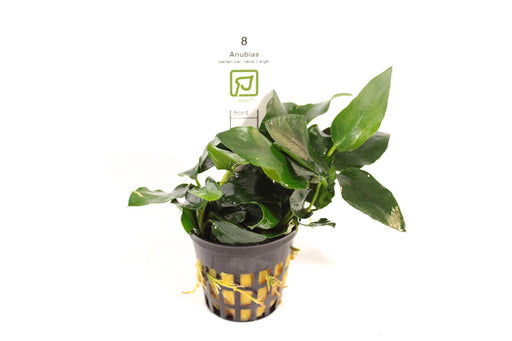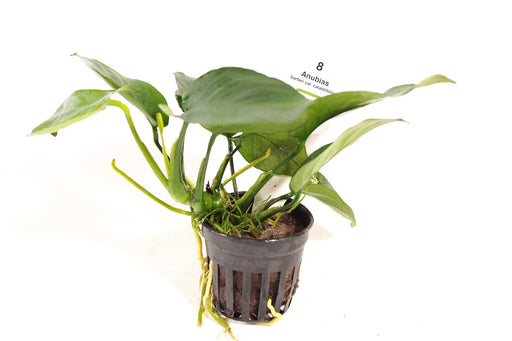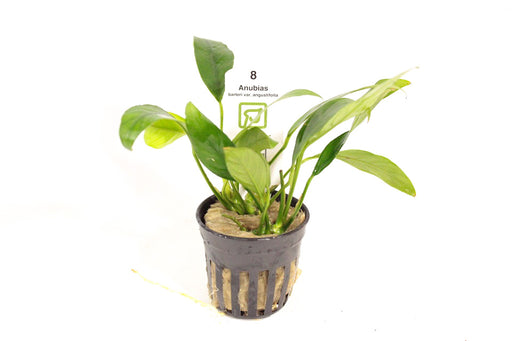The Anubias is named after Anubis, the Egyptian God of the underworld and protector of the dead. This is because the origin of this tropical plant lies in the dark/shady areas of central and western Africa.
Anubias - Aquarium Plants
The Anubias has many variations in size and shape. The plant grows in rivers, streams and swamps and therefore falls under both aquatic and semi-aquatic plants. The Anubias is therefore also suitable for paludariums.
Never plant an Anubias species with its rhizome in the nutrient soil, this is to prevent rotting. This species should always be placed above the ground. You can do this by tying or gluing the Anubias to wood or stone, for example.
Almost all Anubias species are easy plants.
They are slow growers, they are not demanding in terms of light & plant nutrition and the thick, dark green leaves can take a beating. That is why the Anubias is also good to place in an aquarium with plant-eating fish. Too much light can cause algae growth on the plant, which (if this gets out of hand) can damage the leaves.
An example of a difficult and demanding Anubias is the relatively unknown, but special Anubias 'Snow White', with small, fragile white to light green leaves.
Propagation of the Anubias can be done in different ways, if you have luck and patience of course. It is possible to split the rhizome or cut off a shoot, but make sure that both parts have at least 3 leaves and that there is root growth present. You can also, when you have an Anubias species that is going to flower, grow the seeds of the flower into a new plant.











